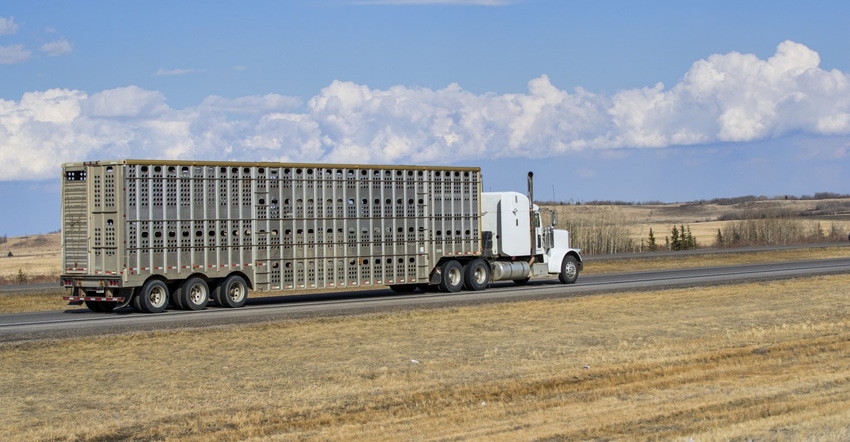
One vulnerability clearly revealed at the onset of the pandemic was the importance of meat processor capacity. If a plant isn’t running full speed, or at all, those animals have no place to go. And a farmer may end up without a check, especially if faced with the unfortunate decision to euthanize animals.
Although we’re no longer hearing reports of euthanizing animals, we are hearing ongoing capacity constraints which does not bode well for the livestock sector and also trickles to feed demand.
On the hog side, a decision by a Minnesota court on a technicality of administrative procedures could mean the immediate drop of 2.5% of processing capacity. A federal court’s decision—which takes effect on June 29—struck down a provision of USDA’s New Swine Inspection System allowing for faster harvest facility line speeds. NSIS, initiated during the Clinton administration and evaluated at five pilot plants over 20 years, was approved for industry-wide adoption in 2019. NSIS modernized an inspection system that had remained unchanged for more than 50 years.
Related: USDA asked to preserve faster hog processing speeds
At a time when the United States is seeking to increase much-needed pork harvest capacity, the court order will reduce plant capacity at six plants running at NSIS line speeds by as much as 25%. Smaller hog farmers will disproportionately bear the brunt of the court’s impact, undermining pork industry competition. Smaller facilities, sometimes even invested in by producers, also have made investments with the understanding they could run at these higher line speeds.
“One of the biggest issues we've heard about the past couple of years, largely because of COVID, but also because of the recent cyberattack against JBS is capacity,” explains Nick Giordano, National Pork Producers Council vice president and counsel, global government affairs. “Well, if this judge's order is left standing, in one swoop 2.5% of pork harvest capacity is going to be knocked out.”
Giordano says consistently members from both sides of the aisle talk about the need for more capacity, and USDA and DOJ can help prevent further capacity constraints by asking for a stay and appealing the ruling.
Last week, Sen. Chuck Grassley, R-Iowa, and Reps. Jim Hagedorn, R-Minn., and Dusty Johnson, R-S.D., initiated letters—currently circulating for additional congressional signatories—to USDA and DOJ, urgently requesting the administration appeal the ruling to prevent the tremendous financial harm to American hog farmers.
There’s a motion companies impacted have made requesting a stay. Giordano says NPPC would like USDA and ideally the union to support that in maintaining the status quo. USDA could appeal and also work with the parties to craft a new rule.
“We’d like to see [USDA] convene a negotiation among the parties, with the principals being the packers and the union. We’re going to believe the union had no intention of harming farmers,” Giardano says. “There’s an opportunity here for everybody to come together and to negotiate a solution that works for everybody.”
Cattle market woes continue
Although the swine capacity challenge isn’t garnering many headlines, the situation on the beef side continues to reveal a growing problem. Despite record high beef demand and prices, farmers are losing several hundred dollars per head.
Related: Livestock groups unite on need to address cattle markets
While back in my hometown in southwest Iowa a few weeks ago for my nephew’s graduation, I started visiting with a local feedlot owner. His story is the same as many. He has 200 head of cattle he needs to move, and each of the five processors he could deliver to offered another excuse for not taking his cattle.
“We’re only taking heifers today.”
“We only need 50, not 200.”
“We’re filled up for the week.”
“Not enough workers to run at full capacity.”
Cattle producers are becoming weary. They feel as consumers pay higher prices for beef, they should see some of those higher profits and still be able to make a living.
This week the Biden administration announced $4 billion to add resilience to the food sector. While sharing the plan’s focus with media, as well as industry stakeholders, Vilsack specifically cited the urgent need to expand capacity in the cattle and beef industry.
The National Cattlemen’s Beef Association notes during the coalition call with stakeholders, there was a productive, positive dialogue on how funds could best be utilized to strengthen the security of the beef supply chain and increase opportunities for profitability for all sectors of the cattle industry.
NCBA CEO Collin Woodall expressed optimism about the priorities Vilsack outlined including focused commons on processing capacity, and the targeted interest he and his team have shown in improving business conditions for cattle producers.
Related: USDA embarks on adding resilience to food system
"We discussed new local and regional processing facilities, bringing federal inspection within reach for more state-inspected facilities, and maintaining open, transparent markets. A nimble, durable beef supply chain is good for cattle producers and consumers alike, and NCBA looks forward to working with Sec. Vilsack and his team as they build out these resources for producers," Woodall says.
In an announcement June 10, USDA’s Food Safety and Inspection Service and the state of South Dakota finalized a Cooperative Interstate Shipment agreement, which provides an opportunity for selected state-inspected meat and poultry processors to ship their products across state lines. Under the CIS agreement, the State of South Dakota may inspect meat in selected establishments for shipment throughout the United States. Currently, nine states participate in the program to promote the expansion of business opportunities for state-inspected meat and poultry establishments.
Woodall also reiterated to Vilsack that demand for U.S. beef is high and cattle supply is high, but the chokepoint in the middle — caused by a lack of hook space — has stifled producer profitability and created unsustainable market dynamics.
About the Author(s)
You May Also Like






